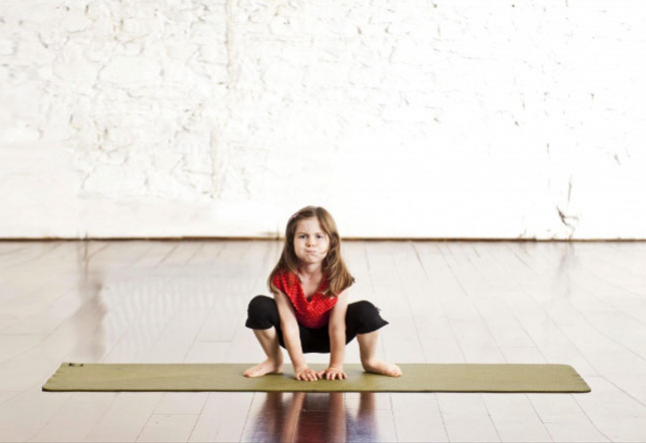how yoga enhances focus in children

When yoga helps make a difference in the way children can focus.
Although yoga originated over 5,000 years ago, it wasn’t until the early 90’s that western medicine began clinical research to scientifically document yoga’s health benefits. Yoga, which means to “join or yoke together,” brings the body and mind together into one harmonious experience. Yoga, in the simplest words, is built on three main structures: physical exercise, breathing, and meditation.
So what does yoga do to me?
The exercises are designed to harmonize all parts of the body. The breathing techniques (pranayama) are built on the fact that breath is the source of life in the body. One who often practices pranayama gently increases breath control. Meditation, particularly with the guidance of the teacher, it is reachable.
It also improves the body’s immune system, tones the body, balances the endocrine system, reduces stress, and creates a general state of well-being for the human body. Anyone can practice yoga regardless of age or physical ability.
How about children?
Studies have shown that children benefit from yoga as much as adults. As children go through the process of growing up, their bodies change, and they experience and struggle with difficult situations.
Yoga can help them understand their body parts and movement. It gives them better fitness training, a well-toned and flexible body, and increased motor skills.
Challenging the brain of young children is a great way to help them and able to properly learn. The right side of the brain, associated with intuitive, spatial thinking, governs the left side of the body. The left side of the brain, associated with logical, analytical thinking, governs the right side. This means that both sides need equal value and attention. Relaxation and concentration take place when both sides of the brain are in unity.
To ensure unification between both the intellectual and the intuitive in a child, artistic subjects such as art and dance are good to practice alongside mathematics and science. Relaxation techniques help balance and breathing exercises refresh the brain. These concentration techniques aid the imagination to grow freely.
Nowadays, children even have their own yoga programs. For example, Yoga Kids teaches yoga as a pathway to learning. Here each pose becomes a springboard for integrated learning activities that explore academic subjects such as anatomy, earth sciences, math, language, music, and art in innovative, playful ways.”
Medical and neuroscience research and studies show that consistent practice of yoga by children improve school performance, decrease misbehavior, greater physical fitness, and better overall health.
How often and for how long?
Guidelines for kids’ yoga report that children under 6 years can do up to 1-minute exercises, for up to 15 minutes. Children over 6 years can perform longer exercises, and their sessions may last for half an hour. Discipline and focus help encourage children’s concentration. Balance poses increase skills, which require focus and a clear mind. These skills make learning easier for children both inside and outside of school.
Practicing yoga can help children better prepare for tests and examinations. This is achieved by carrying out breathing exercises and imagining that they are calm and focused, which in turn helps with concentration and improved performances. Experts suggest that it can be very helpful for children to take a break from studying and try out a few yoga poses.
Sat Bir Khalsa, Ph.D., a neuroscientist at Harvard University, researched yoga’s effects on sleep problems. “Children concentrate on hearing their breath or feeling the stretch in their legs. This awareness, known as Dharana, teaches children to keep their minds in one place instead of letting them wander. This additional self-control can often spill over into the classroom.”
What if my child has learning difficulties?
Practicing yoga can also improve mental and motor skills in children with learning and developmental abilities. For instance, the use of yoga in complementary and alternative medicine is part of a treatment for kids with attention deficit hyperactivity disorder (ADHD).
Regular practice of yoga and meditation has shown to improve children’s ADHD behavior, self-esteem, relationship quality, sleep patterns, and anxiety levels. This often allows for increased concentration and less conflict at school.
Conclusion
The benefits of yoga, on and off the mat, are evident regardless of age. To help promote wellness and harmonious development, encourage children to join to develop their practice!